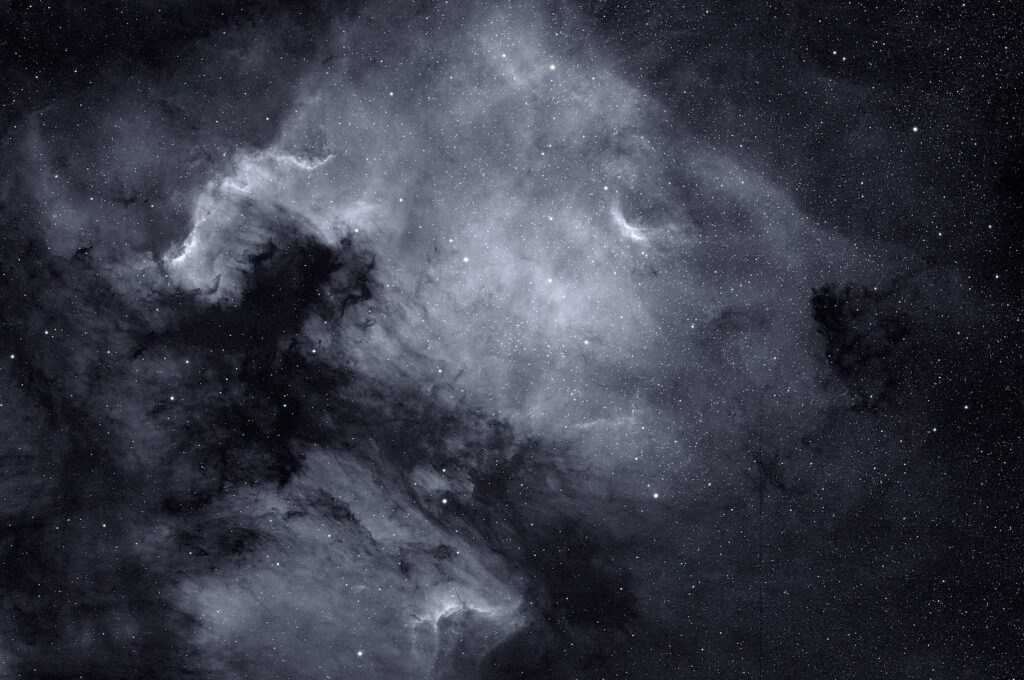This nebula received its name because of its striking resemblance to the North American continent. What you are looking at is a vast cloud of hydrogen gas, 65 light years or 400 trillion miles across, that is being excited and illuminated through the absorption of highly energetic ultraviolet photons emitted by the many hot, young stars in the cloud’s interior. It is exactly the same phenomenon that causes a fluorescent light bulb in your home or office to emit light.
The nebula is 1,900 light years away in the constellation Cygnus, which is straight overhead in the Fall sky in the northern hemisphere. To give a perspective on the nebula’s size, consider this: its diameter is about 200 billion times larger than the North American continent on Earth, or the equivalent of 100,000 of our solar systems (defined as the diameter of Neptune’s orbit), lined up end to end. From this nebula, our Sun, and its planets, would be completely undetectable.
The North America Nebula (NGC7000)
Date Taken:October 4, 2011
Location Taken: Conditions of Location:FWHM 1.8
Equipment Used:Takahashi FSQ-106 apochromatic refractor telescope, Paramount ME mount, SBIG STL11000 CCD camera with remote guide head connected to Takahashi Sky90 for autoguiding, Astrodon hydrogen-alpha filter, T-Point used for polar alignment (required for each imaging session due to my portable setup).
Processing Used:12 x 15 minutes using a hydrogen-alpha filter, guided exposure (total exposure time of 3 hours, 45 minutes), 1x1 binning, dark frame subtraction, processed in Maxim DL and Photoshop.
Distance from Location:1,900 light years
Constellation:Cygnus (the "swan")
Other Link:
